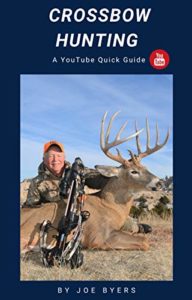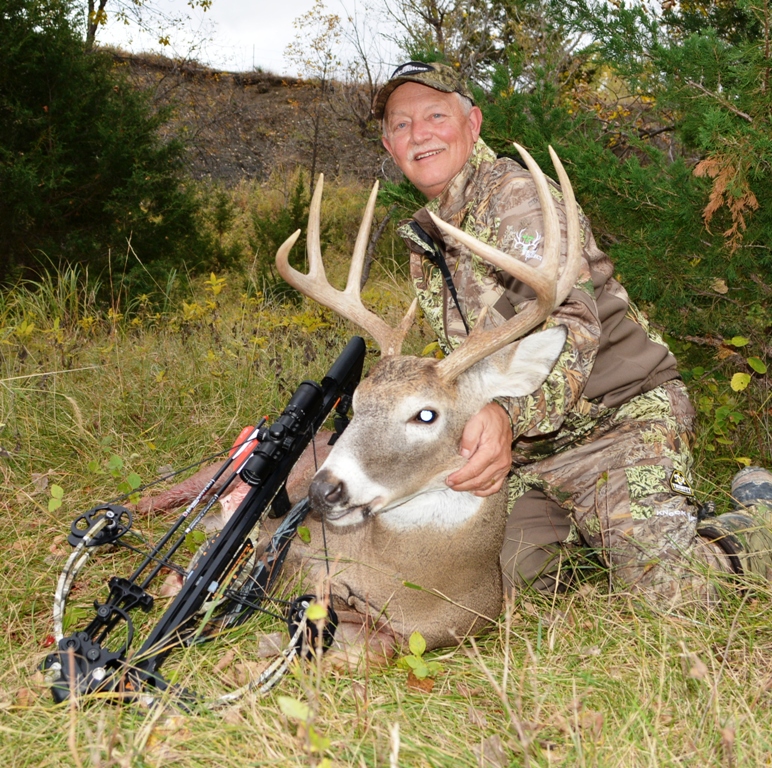Speed kills on the highway, but is it critical for successful hunting? Crossbow products are going through a developmental stage much as compound bows did in the last decade. When introducing a new bow, the first question is “How fast is it?” Compound bows have maxed out at about 350 fps, but crossbows are pushing the 500 fps envelope. Is a 450 fps crossbow a better hunting tool than one shooting 350?
Exhibit A- Crossbow Safari

I’m an avid plains game hunter with more than 20 bowhunting safaris under my belt. Generally, I take multiple bows and broadheads on safari, using the data to inform North American hunters about a product’s effectiveness. In 2015, I invited two friends to participate in a “scientific study” on crossbows and their effectiveness. Each hunter used a different brand bow, the company’s arrow brand, and a variety of broadheads. My Excalibur Micro was the slowest of the group with an arrow speed of 305, with the Mission Sniper Lite, and Horton Ultra-Lite shooting about 330 fps. An integral part of the plan was recording the shot distance, arrow performance, and amount of penetration. We used Rage and NAP Spitfire expandable heads as well as 150-grain fixed heads from Interlock. I was particularly interested in seeing how my Excaliber Micro performed with 16-inch arrows weighing less than 250-grains tipped with a 150-grain fixed blade head.
Astounding Results

Each hunter paid their own trophy fees, so there was nothing “on the house” about this adventure. In five days, we took 15 animals with 15 arrows. Animal sizes arranged from those smaller than a whitetail deer to those larger than a moose and no blood trails exceeding 100 yards.
I watched a waterhole where an old “management” kudu bull frequently drank. I saw it on several occasions and finally got a broadside shot at 20 yards. I aimed low in the shoulder because African antelope do not have vital organs behind the shoulder like whitetail deer. To dispatch the 600-pound kudu, I had to penetrate the muscle of the near shoulder, the vitals, and hopefully out the far shoulder. The bull died on the dead run, crashing about 100 yards away and the broadhead completely penetrated both shoulders. This amazing performance came from the 305 fps Excalibur Micro, a 16-inch carbon arrow, and a 150-grain interlock broadhead.
Distance is the Difference

If you hunt whitetail deer from a tree stand and expect shots from 20-30 yards, a bow of 300-350 fps is more than adequate. This speed is fast enough so that deer will not duck your arrow and if you sight in the bow for 22 or 23 yards, you can probably hunt with a single pin.
On the other hand, if you are likely to stretch these close shots to longer range, the additional power of a fast bow can be used for two advantages. First, you can shoot heavier, even much heavier arrows, which will reduce vibration noise and garner better penetration due to increased momentum. Secondly, a faster bow will yield a better margin of error when judging distance. If you underestimate the range of a whitetail buck, the flatter trajectory of a faster arrow will compensate for that error.
Speed at a Price
 Faster bows often cost more, sometimes much more than bows that will adequately and consistently harvest big game. Additionally, greater speed results in much greater vibrations and stress on moving parts. America’s faster bows usually must be cocked with a crank and a “sled.” If you are considering purchasing a new bow, check out my new book that highlights 14 2020 models and should help you make an informed choice. To see the details of the book, click here.
Faster bows often cost more, sometimes much more than bows that will adequately and consistently harvest big game. Additionally, greater speed results in much greater vibrations and stress on moving parts. America’s faster bows usually must be cocked with a crank and a “sled.” If you are considering purchasing a new bow, check out my new book that highlights 14 2020 models and should help you make an informed choice. To see the details of the book, click here.



















![The Best Deer Camp Chili [VIDEO] Deer Chili Ingredients, Tomatoes, Chili Spices](/wp-content/uploads/2015/10/Deer-Chili-Deer-Camp-Recipe-218x150.jpg)
![How to Call Elk Early in the Season [VIDEO]](/wp-content/uploads/2016/08/byers003-218x150.jpg)





![Idiots Disturb Hunter: How Would You Have Handled It? [VIDEO]](/wp-content/uploads/2015/10/DSC00110-e1474487693878-100x70.jpg)
![Albino Buck Shocked to Shed His Antlers [VIDEO]](/wp-content/uploads/2015/10/AlbinoDeer-100x70.jpg)